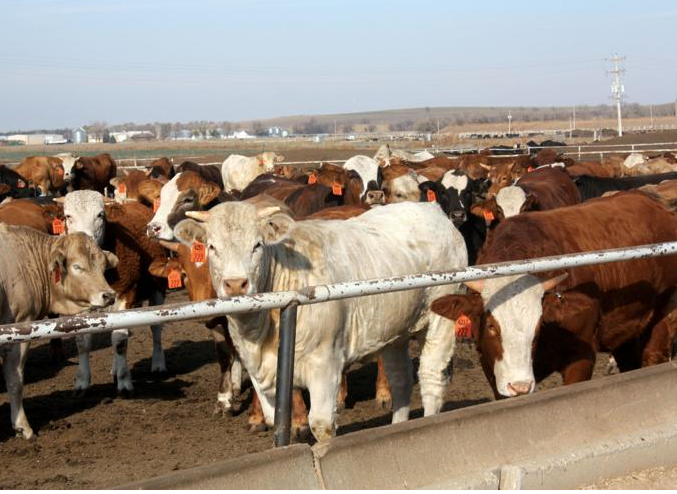With the annual K-State Legacy Sale approaching, knowing the operation objectives will help producers select new breeding stock
MANHATTAN, Kan. — During the late winter and early spring, rural mailboxes seem to be full with bull sale catalogs.
In a recent Cattle Chat podcast, experts at Kansas State University’s Beef Cattle Institute said it can be hard to know how to prioritize traits in making bull selections.
“The most important thing to do is find out what your objectives and goals are for your operation,” said Shane Werk, manager of K-State’s Purebred Beef Unit.
Like many cattle ranches, Werk and his students are preparing for the annual Legacy Bull sale, slated for 4 p.m. March 4 at the Stanley Stout Center in Manhattan.
“This is the 45th annual Legacy Sale and we are excited about the offering that we will have available for producers,” Werk said.
Operation Objectives
When viewing catalogs, Werk suggests prospective buyers look for bulls that offer traits that enhance the operation.
He said commercial producers need to know the genetic and marketing goals of the operation to determine the best breed fit. EPDs, or expected progeny differences, can provide those insights on what bulls to add to the ranch.
Beef cattle nutritionist Phillip Lancaster said producers should determine the traits they really need for improvement. “Then look for bulls that have EPDs above the average EPD for those traits, but also make bulls have average EPDs for other traits so that they don’t lose ground in some traits,” he said.
“The marketing plan dictates a lot about what traits you need to pay attention to when you’re looking at those bulls.”
There will be selection differences if the acquired bull will be breeding heifers or cows. K-State veterinarian Bob Larson pointed out that when breeding heifers, the bull’s calving ease and calving weight EPDs should be prioritized.
But Werk said there can be a tradeoff if producers are only using one bull to breed the entire herd.
“If you’re buying heifer bulls for your cows, obviously there’s a potential for less performance and growth in your calves,” Werk said. “Also, the bulls that are best for breeding heifers are typically the highest-priced bulls.”
Bull Acclimation
K-State veterinarian Brian Lubbers said there are health considerations for bulls once producers bring them home.
“When bringing a new animal into the herd, producers need to make sure that they are not bringing diseases along with that animal,” Lubbers said.
When separating a bull for biosecurity reasons, it is also a good time to let the bull acclimate to new feed and water, he said.
Separating the new bull from the others can be beneficial not only from a health standpoint but also from a social standpoint, agreed the experts.
When the new bull is introduced, it is a smoother transition to add them to the pen at feeding time, said Werk. “If it’s a young bull in with a handful of older bulls, the fight for dominance is going to end quickly,” he added.
To hear the full discussion, listen to the Cattle Chat podcast online. To learn more about the Legacy Bull Sale, follow this link.
-30-
FOR PRINT PUBLICATIONS: Links used in this story BCI Cattle Chat podcast, https://ksubci.org/2022/02/18/pre-sale-strategy-questions-with-a-bull-expert-cattle-inventory-faa-testing-in-bulls/
Legacy Sale, https://www.asi.k-state.edu/bullsale
K State Research and Extension is a short name for the Kansas State University Agricultural Experiment Station and Cooperative Extension Service, a program designed to generate and distribute useful knowledge for the well being of Kansans. Supported by county, state, federal and private funds, the program has county extension offices, experiment fields, area extension offices and regional research centers statewide. Its headquarters is on the K State campus in Manhattan. For more information, visit www.ksre.ksu.edu. K-State Research and Extension is an equal opportunity provider and employer.
Story by:
Grace Jacobson
[email protected]
More information:
Shane Werk
785-565-1881
[email protected]
Phillip Lancaster
785-532-6323
[email protected]
Brian Lubbers
785-532-4012
[email protected]
Bob Larson
785-532-5700
[email protected]
Access the NEWS_ALL Home Page and Archives



